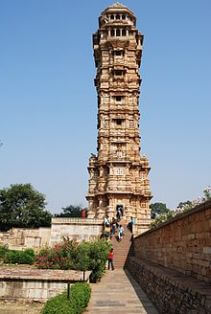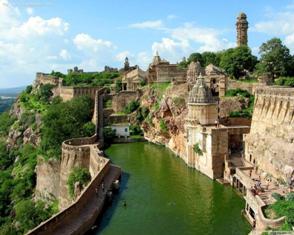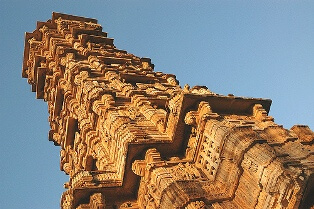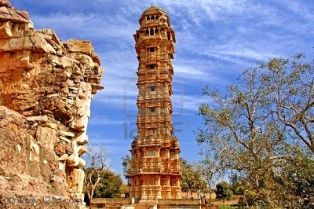Chittorgarh Tour Package

Chittorgarh is the epitome of Chattari Rajput (an Indian Warrior caste) pride, romance and spirit, for people of Chittor always chose death before surrendering against anyone. It reverberates with history of heroism and sacrifice that is evident from the tales still sung by the bards of Rajasthan. Though it can now be called a ruined citadel there is much more to this huge fort. It is a symbol of all that was brave, true and noble in the glorious Rajput tradition.
To See:
Chittorgarh Fort is a large space, and visitors may find it useful to compartmentalise the different sections.

Victory Tower
Vijay Stambha, is a huge nine storey tower which was built by Maharana Kumbha to commemorate his victory over the Muslim rulers of Malwa and Gujarat in 1440. There are sculptures and carvings on the exterior walls of the tower. The tower is visible from any section of the town below. And for reaching tower top one have to climb 157 steps, one can take great view of the surroundings. The inside walls of the tower are carved with images of Gods, weapons, etc.
Kirti Stambha (Tower of Fame)
The Chittorgarh Victory Tower and the Meera Mandir.
Built by a Bagherwal Jain merchant Jijaji Rathod, it is dedicated to Adinath, the first Jain tirthankar (revered Jain teacher). In the lowest floor of the tower, naked figures of the various tirthankars of the Jain pantheon are seen in special niches formed to house them. A narrow stairway with 54 steps leads through the six storeys to the top. The top pavilion that was added in the 15th century has 12 columns.

Rana Kumbha’s Palace.
The Palace of Queen Padmini. It is widely believed that this glimpse of Padmini’s beauty on the water area mesmerised Ala-ud-din Khilji to destroy Chittor which eventually lead to Jauhar.
Kalika Mata Temple. Across from Padmini’s palace is the Kalika Mata Temple, Chittorgarh Fort. Originally, a Sun temple dated to the 8th century dedicated to Surya -the sun-god, was destroyed in the 14th century. It was rebuilt as a Kali temple.
Tulja Bhavani Temple. on the west side of the fort is the ancient Tulja Bhavani temple built to worship goddess Tulja, considered sacred. The tope khana (cannon foundry) is located next to this temple in a courtyard, where a few old cannons are still seen.
Fateh Prakash Palace (Open daily except Friday (10 a.m. to 4.30 p.m.)). Build by Maharana Fateh Singh this huge palace is of morden style. This place has been named Fateh Prakesh after Maharana Fateh Singh. There is a big Ganesh idol, a fountain, and different frescoes which are to be seen to be believed. This palace, now a museum, has a rich collection of sculptures from temples and buildings in the Fort.

Jain Temples. At present six jain temples on the fort of Chittor. The largest and chief among them is the temple of Bhagawan Adinatha with fifty-two devkulikas. The place of this temple is known as ‘Sattavish devri’. It means that at some time in the past, there were twenty-seven temples here. The Digamabar Jain Kirtistambh and seven-storied Kirtistambh are two among them. The seven-storied Kirtistambh was built in the fourteenth century in memories of Bhagawan Adinatha
Gaumukh Reservoir. A deep tank filled by a spring coming from a ‘cow mouth’, situated at the edge of the cliff. It is considered to be sacred where you can feed the fishes.











